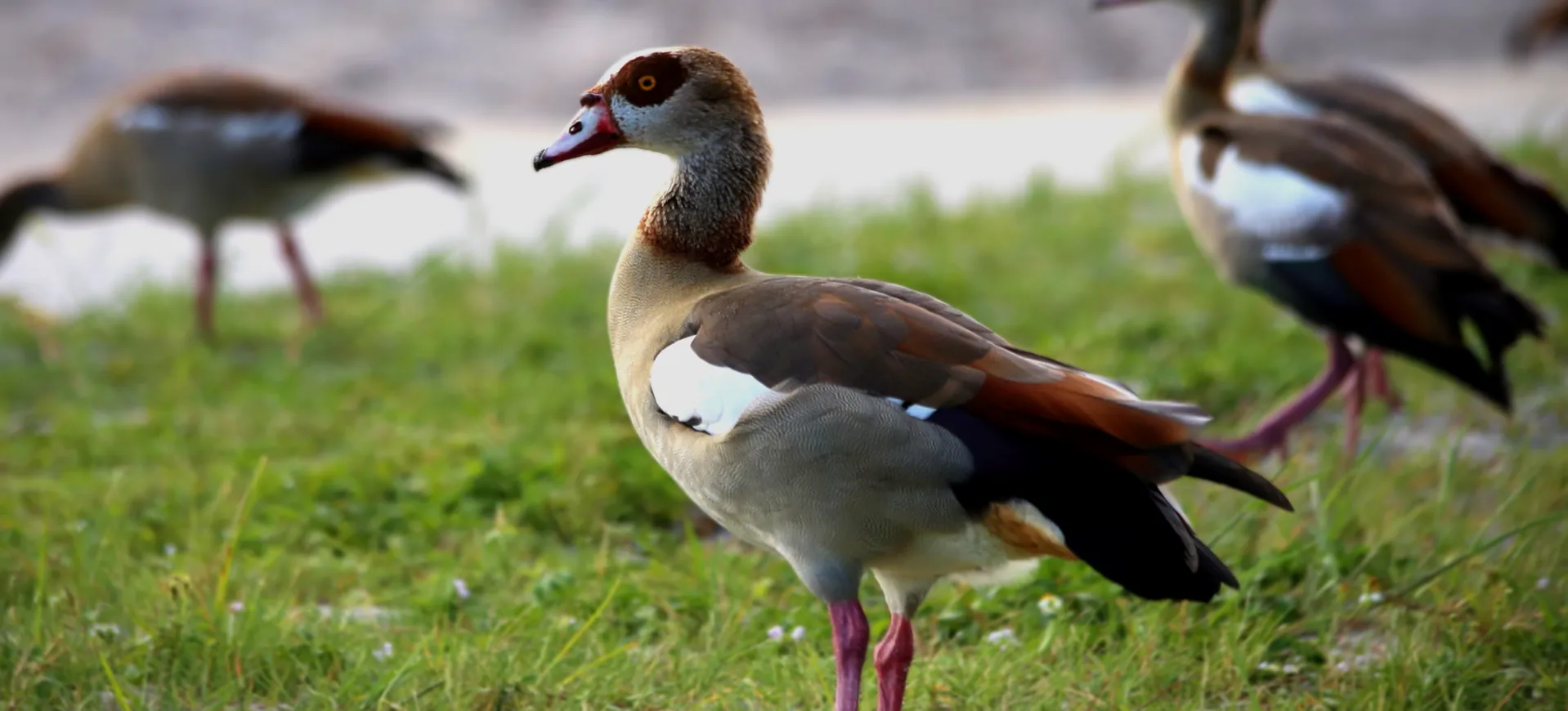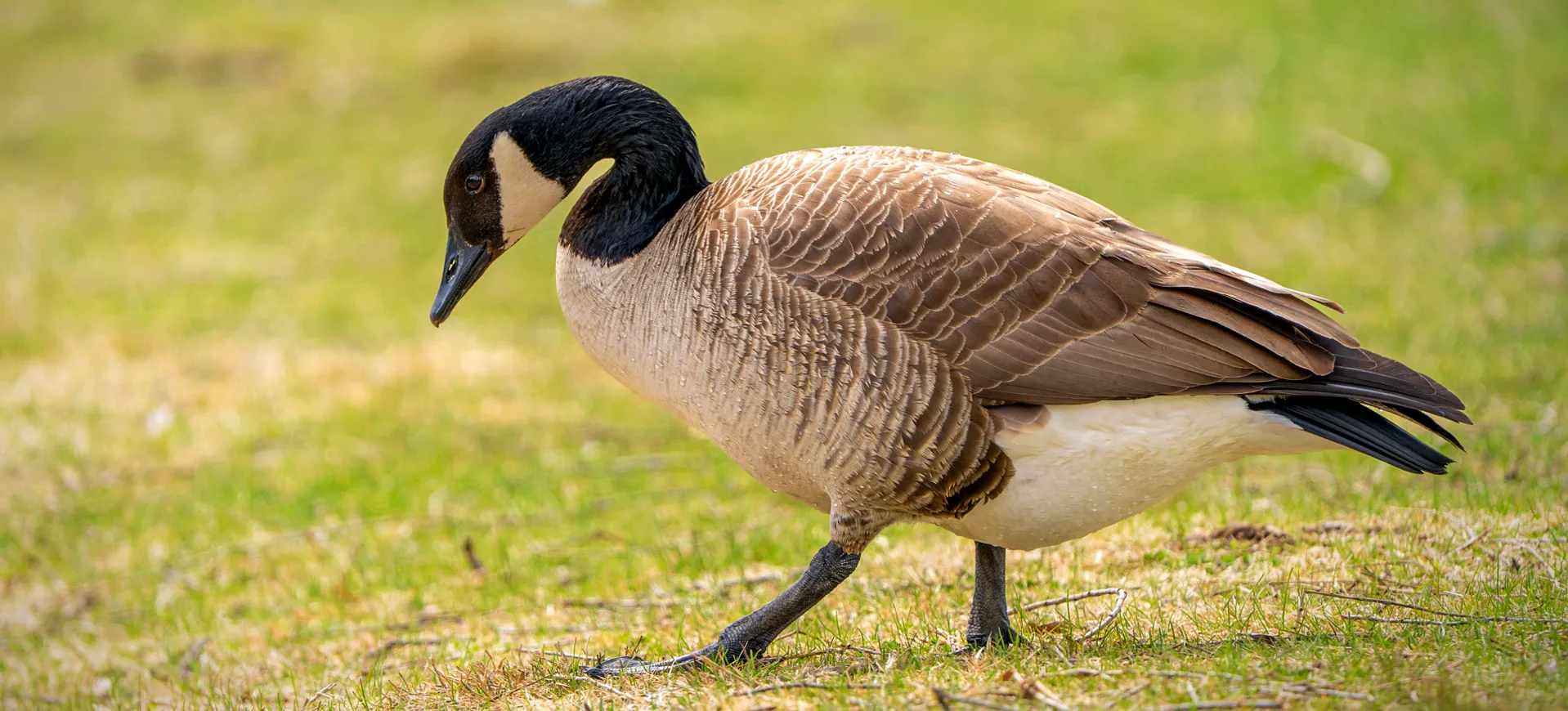Overview
The Northern Shoveler, known scientifically as Anas clypeata, is a distinctive species of dabbling duck. This bird is most notable for its large, spoon-shaped bill, which is larger in males and has evolved to allow efficient foraging in shallow waters. Male Northern Shovelers showcase striking plumage during the breeding season, with bright iridescent green heads, white chests, and chestnut sides. Conversely, females are mottled brown, providing excellent camouflage in their wetland habitats, especially during nesting.
The Northern Shoveler is a migratory bird, breeding in the northern areas of Europe, Asia, and North America and wintering in southern Europe, Africa, the Indian subcontinent, Southeast Asia, and Central and South America. Their breeding habitat is typically shallow marshes and wetlands, where they can be seen swimming in small groups or pairs. Outside the breeding season, Northern Shovelers often form large flocks on lakes and wetlands, displaying social behavior typical of many dabbling duck species. Their migration patterns are a significant aspect of their life cycle, enabling them to exploit seasonal food resources and suitable breeding grounds.
As a species adapted to aquatic environments, Northern Shovelers are excellent swimmers, using their large bills to skim the water’s surface for food. Their feeding technique is unique among ducks; they use their spatulate bills to strain food from the water, often swimming in tight circles to create whirlpools that bring food items to the surface. This specialized bill is lined with fine comb-like structures called lamellae, which act as a sieve to capture small aquatic organisms, seeds, and plant matter.
Taxonomy
Kingdom
Phylum
Class
Order
Family
Genus
Species
Type
Physical Description:
The Northern Shoveler is distinguished by its oversized bill, which measures about 2.5 inches long and is wider at the tip than the base. This unique bill shape is immediately noticeable and differentiates it from other duck species. Adult males have a striking appearance with a glossy green head, white breasts, and chestnut sides, while in flight, their blue forewing feathers are visible. Females and non-breeding males are drabber, with mottled brown plumage that offers excellent camouflage.
In terms of size, Northern Shovelers are medium-sized ducks. They have a length of about 19 inches and a wingspan ranging from 30 to 34 inches. These ducks have a somewhat stout build with a large head, neck, and relatively small body. Their legs are set back on their bodies, aiding in swimming but making them appear somewhat awkward on land. The Northern Shoveler’s plumage undergoes a molt after the breeding season, with males losing their bright colors temporarily.

Lifespan: Wild: ~10 Years || Captivity: ~20 Years

Weight: Male: 1.3–1.8 lbs (600–820 g) || Female: 1.1–1.5 lbs (500–680 g)

Length: Male: 18.9–20.1 in (48–51 cm) || Female: 17.3–18.9 in (44–48 cm)

Wingspan: Male & Female: 30–34 in (76–86 cm)

Top Speed: 50 mph (80 km/h)
Characteristic:
Native Habitat:
The Northern Shoveler prefers wetland habitats, including marshes, lakes, and ponds with abundant aquatic vegetation. These environments provide food resources and protection for nesting and rearing young. During the breeding season, they are typically found in shallow freshwater marshes with dense vegetation, which offers ideal conditions for nesting and foraging. The availability of open water for feeding and dense vegetation for cover is crucial for their survival and reproductive success.
In winter, Northern Shovelers migrate to more temperate regions, where they inhabit a wider range of wetland types, including estuaries, brackish marshes, and coastal lagoons. These winter habitats often support large congregations of waterfowl, providing opportunities for social interactions and access to diverse food sources. The adaptability of Northern Shovelers to different wetland environments is a key aspect of their ecology and contributes to their widespread distribution.
Climate Zones:
Biomes:
Biogeographical Realms:
Continents:
Countries:
Diet:
Diet & Feeding Habits:
Northern Shovelers are omnivorous, with a diet that varies seasonally. In the breeding season, their diet consists mainly of aquatic invertebrates, including insects, mollusks, and crustaceans, which provide the necessary protein for egg production and growth. During the non-breeding season, their diet shifts to a higher proportion of plant material, including seeds and aquatic vegetation. This varied diet is key to their ability to thrive in different environments.
The feeding behavior of Northern Shovelers is unique and highly specialized. They often feed by swimming with their large bills submerged, filtering out food from the water. They also dabble, tipping forward to feed on submerged vegetation and invertebrates. In some instances, Northern Shovelers can be seen working cooperatively in groups, swimming in circles to create a whirlpool effect that brings food to the surface, making it easier to filter and consume.
Mating Behavior:
Mating Description:
Northern Shovelers are monogamous during the breeding season, forming pair bonds that last for the duration of the season. Courtship involves elaborate displays by the males, including head-tossing, bill dipping, and wing-flapping, to attract females. These displays are often performed in small groups, with several males vying for the attention of a single female. Once paired, couples engage in mutual preening and other bonding behaviors.
Breeding typically occurs in late spring to early summer, depending on the location. Females build the nest, a shallow depression on the ground lined with grass and down, usually concealed in dense vegetation near water. The female lays 9 to 12 eggs, which she incubates for about 23 to 25 days. During this time, the male may stay nearby but not participate in incubation. After hatching, the ducklings are precocial and can leave the nest within a day, guided and protected by the female.
Reproduction Season:
Birth Type:
Pregnancy Duration:
Female Name:
Male Name:
Baby Name:
Social Structure Description:
Northern Shovelers exhibit a flexible social structure characterized by varying levels of social interaction throughout the year. During the breeding season, they are mostly monogamous and territorial. Pairs form strong bonds, with males defending their territory and mates from rivals. This period of heightened territoriality and pair bonding is crucial for successfully breeding and rearing the young.
Outside the breeding season, Northern Shovelers become more gregarious, forming large flocks in their wintering grounds. These flocks can include hundreds to thousands of individuals, demonstrating high social tolerance. These groups engage in communal feeding and roosting, taking advantage of the safety and efficiency that large numbers provide. The formation of flocks also plays a role in their migration, as they often travel in groups during their long journeys between breeding and wintering areas.
Groups:
Conservation Status:
Population Trend:
The global population of Northern Shovelers is considered stable and healthy, with no immediate threats to their overall numbers. They are widespread in their breeding range, with significant populations in North America, Europe, and Asia. During the breeding season, they are typically found in small groups or pairs, utilizing a variety of wetland habitats for nesting and feeding.
Northern Shovelers often form large flocks in their wintering grounds, sometimes numbering in the thousands, especially in key wintering areas like the Mediterranean, coastal Asia, and parts of Africa. These large congregations indicate the species’ social nature outside the breeding season. The adaptability of Northern Shovelers to a range of wetland habitats, along with their generalist feeding habits, contributes to their robust population status.
Population Threats:
While Northern Shovelers are currently not facing significant threats, they are susceptible to habitat loss and degradation, particularly in their breeding areas. The drainage and conversion of wetlands for agriculture and urban development directly impact their nesting and feeding grounds. Additionally, water pollution, including pesticide and heavy metal contamination, poses a risk to their food sources and overall health.
Climate change is another potential threat, as it can alter the wetland ecosystems they depend on. Changes in precipitation patterns and temperature can affect the availability of suitable breeding and wintering habitats. Furthermore, the increased frequency of extreme weather events may impact their migration patterns and breeding success. Despite these concerns, the species’ adaptability has enabled them to cope with these challenges.
Conservation Efforts:
Northern Shovelers’ conservation measures primarily focus on preserving and restoring wetland habitats. This includes the protection of key breeding and wintering sites, along with the management of water levels and vegetation to maintain suitable conditions. Efforts to reduce water pollution and mitigate the impacts of climate change are also crucial for their long-term survival. Additionally, monitoring programs help track population trends and identify potential threats, guiding conservation actions.
In some regions, Northern Shovelers benefit from general waterfowl conservation initiatives, which aim to maintain healthy populations of various duck species. These initiatives often involve habitat management, research, and public awareness campaigns to promote the importance of wetland ecosystems. Collaboration between governments, conservation organizations, and local communities is key to effectively conserving this and other waterfowl species.
Additional Resources:
Fun Facts
- The Northern Shoveler’s Bill contains over 100 fine comb-like structures (lamellae) for filtering food from the water.
- They can skim the water’s surface while swimming, a unique feeding method among ducks.
- Northern Shovelers often engage in a feeding behavior known as “pinwheeling,” where several ducks swim in tight circles to stir up food from the bottom.
- Unlike many other duck species, Northern Shovelers rarely dive; they prefer to feed at the water’s surface.
- After the breeding season, the male’s bright breeding plumage is replaced by a more subdued eclipse plumage.
- Northern Shovelers have vocalizations, including clucks, whistles, and grunts, used in different social contexts.
- They are among the earliest duck species to migrate south in the fall and one of the last to return to their breeding grounds in the spring.
- Northern Shovelers can interbreed with other duck species, which is relatively rare.
- Their large bills give them a somewhat ungainly appearance, but they are agile and efficient in the water.
- Northern Shovelers have a distinctive profile during flight due to their large, spoon-shaped bills.





















































































